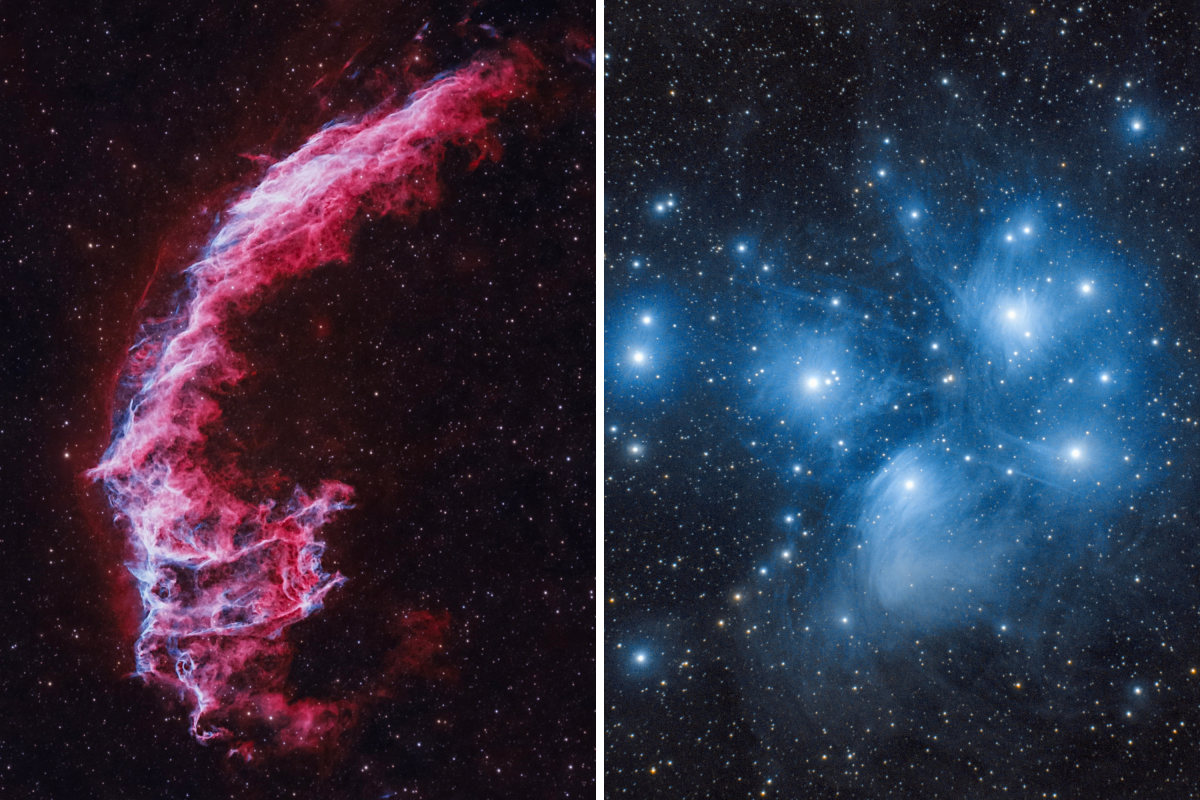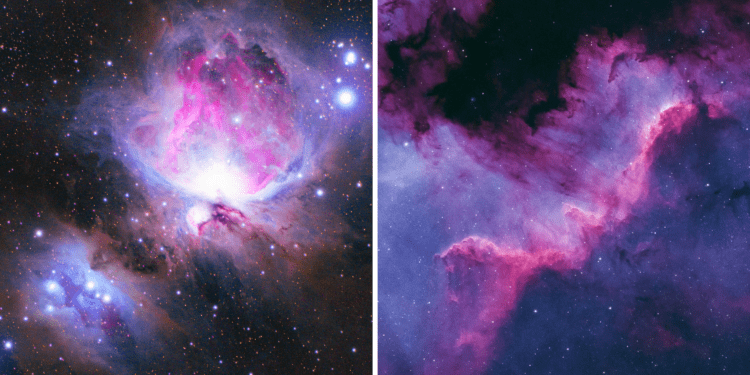Orion nebula and North American nebula. The teen stunned the internet with his impressive photography.
Orion nebula and North American nebula. The teen stunned the internet with his impressive photography.
Rudy Siggs/Rudy Siggs
This process involves assembling and balancing the telescope, aligning it with the north celestial pole, and ensuring it’s ready for the long exposures necessary for capturing the night sky.
Once darkness falls, Siggs carefully positions his telescope, checks the focus, and runs test shots. If satisfied, he programs the session into the onboard computer, allowing the setup to operate autonomously throughout the night.
After gathering enough light data, the final step involves processing the images on his PC to highlight colors and details.
“This processing step shouldn’t be underestimated; it can be as time-consuming and intricate as capturing the images, but it’s very rewarding. This is the part where I start seeing my work pay off,” he said.
For Siggs, three key components are crucial in achieving the perfect shot: a sturdy mount, a quality telescope, and a high-resolution camera.
Another awe-inspiring photo Siggs has taken is of the Eastern Veil Nebula, a stunning feature within the larger Cygnus Loop Nebula complex.
The Cygnus Loop is a vast supernova remnant, the aftermath of a star’s explosive death between 5,000 and 10,000 years ago.
This cataclysmic event sent waves of gas and dust light-years across space, with one of those waves forming the vibrant Eastern Veil Nebula. Its striking colors and sharp contrasts make it a favorite among astrophotographers.

Veil Nebula and Pleiades star cluster. More examples of Siggs’s space photography.
Veil Nebula and Pleiades star cluster. More examples of Siggs’s space photography.
Rudy Siggs/Rudy Siggs
His go-to mount, the HEQ5 Pro from Skywatcher, ensures precise tracking, preventing blur or star trails. He uses a 70mm refractor telescope, which offers a balance between capturing fine details and photographing large areas of the sky.
Recently, he acquired a cooled astronomy camera, ideal for capturing clear images even during hot summer nights. Essential accessories, like a guide scope and an onboard mini-computer, further enhance his setup, allowing him to achieve such remarkable results.
Siggs expressed his gratitude for living in an area with minimal light pollution, which allows him to capture faint celestial objects with relative ease.
Reddit Reacts
The photo received 9,500 upvotes in the thread “r/interestingasfuck”. Redditors were captivated by Siggs’ work, with one user commenting: “That’s pretty awesome. How’s the light pollution in your area?” to which Siggs responded, “Bortle 4, fairly dark! Depends what direction I’m looking in though.”
The Bortle scale is a nine-level scale used to measure night sky brightness.
Other users praised the photo, calling it “absolutely beautiful” and “amazing.”
One commenter even joked: “Pic of you with the scope goes hard! About to drop a science album.”
Some users criticized the young astrophotographer for labelling his expensive equipment as “off the shelf”.
Siggs responded: “What I meant was that it’s readily available consumer equipment, you could quite literally walk into a shop and buy this stuff off the shelf. Granted it’s expensive, but it’s not custom-built like professional observatory equipment would be.”
Source link : http://www.bing.com/news/apiclick.aspx?ref=FexRss&aid=&tid=66d4aebd11754b5db0cbbd85a8491512&url=https%3A%2F%2Fwww.newsweek.com%2Fawesome-space-shots-teen-back-yard-1946562&c=6139891271227058969&mkt=en-us
Author :
Publish date : 2024-09-01 07:00:00
Copyright for syndicated content belongs to the linked Source.












